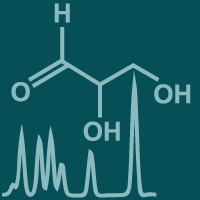Topic Menu
► Topic MenuTopic Editors

2. Manipal Institute of Technology, Manipal University, Manipal, India
Application of Chromatography for Point of Care Diagnosis of Noncommunicable Diseases
Topic Information
Dear Colleagues,
The diagnosis of non-communicable diseases typically involves a comprehensive approach that combines medical history, physical examination, laboratory tests, and imaging studies. Biomarker detection has emerged as a valuable diagnostic tool for specific diseases, but precise and rapid quantification of disease-specific biomarkers requires analytical methods that can enable fast sampling and preconcentration from sample matrices. Therefore, solid-phase extraction and micro-extraction techniques are gaining popularity in medical diagnosis due to their unique advantages, including integrated sampling, extraction, and analysis by GC-MS or LC-MS. This Special Issue focuses on the latest discoveries in the field of non-communicable disease diagnosis and aims to bring together clinical and primary researchers to submit interdisciplinary works on cutting-edge techniques, including sample preparation techniques and chromatography methods. The topic covers the latest progress in the development of point-of-care tests, molecular diagnostic tests, animal models for diseases, appropriate dosages and formulations, as well as artificial intelligence and machine learning predictive tools/models for the following diseases (but not limited to): 1. COPD 2. Stroke 3. Alzheimer's disease 4. Liver disease 5. Chronic kidney disease 6. Sickle cell disease/thalassemia 7. Cancer—breast, cervix, oral, and lung 8. Diabetes 9. Cardiovascular disease.
Dr. Chiranjit Ghosh
Dr. Liqin Chen
Prof. Dr. Keshava Balakrishna
Prof. Dr. Chiranjay Mukhopadhyay
Topic Editors
Keywords
- diagnosis; breath
- metabolites
- biomarker
- point-of-care
- non-invasive
- VOC
- gas chromatography
- liquid chromatography
- solid phase extraction
Participating Journals
| Journal Name | Impact Factor | CiteScore | Launched Year | First Decision (median) | APC |
|---|---|---|---|---|---|

Metabolites
|
3.7 | 6.9 | 2011 | 14.4 Days | CHF 2700 |

Molecules
|
4.6 | 8.6 | 1996 | 16.1 Days | CHF 2700 |

Preprints.org is a multidisciplinary platform offering a preprint service designed to facilitate the early sharing of your research. It supports and empowers your research journey from the very beginning.
MDPI Topics is collaborating with Preprints.org and has established a direct connection between MDPI journals and the platform. Authors are encouraged to take advantage of this opportunity by posting their preprints at Preprints.org prior to publication:
- Share your research immediately: disseminate your ideas prior to publication and establish priority for your work.
- Safeguard your intellectual contribution: Protect your ideas with a time-stamped preprint that serves as proof of your research timeline.
- Boost visibility and impact: Increase the reach and influence of your research by making it accessible to a global audience.
- Gain early feedback: Receive valuable input and insights from peers before submitting to a journal.
- Ensure broad indexing: Web of Science (Preprint Citation Index), Google Scholar, Crossref, SHARE, PrePubMed, Scilit and Europe PMC.




